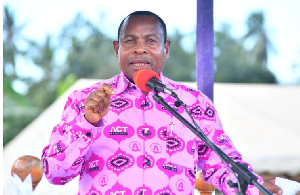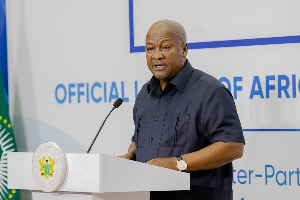A World Bank study has found that countries which received debt relief under the Enhanced Heavily Indebted Poor Countries (HIPC) Initiative are once again at risk of unsustainable debt.
The study found that the debt thresholds of 11 of the 18 post-completion point countries deteriorating substantially since they reached completion point. In 11 of the 13 post-completion point countries studied, ‘the key indicator of external debt sustainability has deteriorated since completion point’, with the debt ratios exceeding HIPC thresholds in eight of these countries.
The 11 countries are Uganda, Bolivia, Tanzania, Burkina Faso, Mauritania, Benin, Niger, Nicaragua, Guyana, Mozambique and Ethiopia. The other two counties studied were Mali and Senegal which have retained their debt ratios since completion point. The other three post completion HIPCs Honduras, Madagascar, Zambia, Rwanda and Ghana were not studied because current data is not sufficient to make comparable analyses.
The Bank’s Independent Evaluation Group (IEG) conducted an evaluation of the HIPC initiative and its report released on 21 April, found that the HIPC initiative has been limited in assisting indebted countries achieve a ‘permanent exit’ from debt rescheduling and mobilising additional resources for development.
The IEG study also found that although the enhanced HIPC initiative has reduced US$18 billion worth of debt in 18 countries and halved their debt ratios, ‘It’s effect of improved exports and revenue mobilization on debt ratios has been off set by new borrowing’ on the part of the countries concerned.
New loans
New loans accounted for a third of the increase in debt to export ratios in Uganda and Bolivia, the two countries with the most serious deterioration. A third of the new loans contracted by Bolivia since 2000 was non-concessional, meaning Bolivia would have to repay creditors a market rate interest on the loans.Meanwhile, in the two countries which have maintained their debt ratios since completion point, Mali and Senegal, new borrowings have been less than anticipated and both countries have shown strong: export performance (Mali) and increase government revenues (Senegal).
A country is deemed as having unsustainable debt and therefore eligible for HIPC assistance if its debt (calculated at net present value NPV) to export ratios are above 150% or if its debt to revenue ratio are above 250%. The IEG study found that where the ratios are calculated, using debt to exports ratio, the ratios for these countries worsened from an average of 142 % to 174 %. Where the debt- to- revenues ratio was used, the ratios deteriorated from 181 % to 218% on average.
HIPC post-completion countries also remain vulnerable to export shocks and further debt distress since completion point. HIPC countries reach ‘completion point’ when their debt stock is cancelled by creditors after maintaining an IMF-supported macroeconomic programme under the Poverty Reduction and Growth Facility (PRGF) for three years, implementing their Poverty Reduction Strategy (PRS) for a year and meeting structural reform conditions determined at ‘decision point’.
The enhanced RIPC initiative was launched in 1999 and the 18 countries qualifying for irrevocable debt relief are Benin, Bolivia, Burkina Faso, Madagascar, Mali, Mozambique, Tanzania, Uganda, Ghana, Honduras, Nicaragua, Rwanda, Guyana, Niger, Ethiopia, Senegal, Zambia and Mauritania.
Non-delivery
The IEG report also criticised creditors for not delivering on their commitments under the RIPC initiative, reporting that the majority of the relief not committed were from non-Paris Club and commercial creditors. Much of this stems from the fact that the HIPC initiative is a voluntary agreement which ‘has hindered efforts to achieve full participation of all creditors’, says the report. The RlPC initiative also did little to reduce the debt owed by countries to multilateral institutions, including the World Bank and the International Monetary Fund (IMF).A total of US$35 billion (92%) of the total US$38.2 billion debt cancellation estimated by the initiative has been committed so far. Non-Paris Club bilateral creditors which make up 5.3% of the total amount have so far only committed 43% of their total share of relief, a US$2 billion shortfall. For seven countries Nicaragua, Democratic Republic of Congo, Tanzania, Mozambique, Niger, Mauritania and Senegal these commitments exceeded US$l00 million and in four of these countries, non-Paris Club debt relief accounts for almost 20 percent of their expected debt relief.
Commercial creditors have generally not committed to providing RIPC nor traditional debt relief for these countries and ‘more than a few have initiated litigation against RIPCs to recover debt, winning judgments of at least US$586 million in nine RIPC countries as of 2005, against claims of US$281 million,’ the report finds.
Post-completion point countries have also shown little improvement in revenue mobilisation and export performance. According to the IEG study, from 1994 to 2003, these countries’ revenue as percentage of GDP has not changed and their balance-of-payments current account situation deteriorated.
Increases
Their current account deficits increased from 6.9% of GDP to 8.8% of GDP, with these deficits being twice as large as those in non-HIPC low-income countries. Exports for HIPC countries have also remained stagnant at around 26% of GDP from 1999 to 2003 while other low income Bank member countries have seen export rates of around 40% of GDP at that time.The report also notes RIPC countries’ debt management strategies as contributors to debt distress: ‘RIPC countries have weak capacity to manage their public debt. In fact, performance in public debt management has deteriorated in all low income countries. RIPC countries in particular need help in analyzing the impact of new borrowing on their long-term debt sustainability’ .According to the IEG: ‘Agencies responsible for debt management [in RIPC countries] are generally careful to ensure that new loans meet country requirements for concessionality, but are not able to analyze the impact of new borrowing on long-term debt sustainability and on macroeconomic scenarios’.
These findings have led the IEG to conclude that: ‘debt relief, by itself, cannot assure sustainable levels of debt, no matter what the threshold’ and such efforts need ‘to be accompanied by significant efforts to improve repayment capacity’. This includes measures for ‘sustained improvements in export diversification, fiscal management, the terms of new financing, and public debt management’, measures which are outside the remit of the RIPC initiative but which need to be taken into consideration as part of the drive to reduce debt and aid dependence in HIPC countries.
The IEG also criticized the focus on social sector expenditure in HIPC poverty reduction strategies and insufficient attention paid to other national strategies for growth and development in HIPC related operations, including under the IMF’s Poverty Reduction and Growth Facility (PRGF). All RIPC countries undergo a three-year PRGF operation in order to qualify for irrevocable debt relief.
Wrong focus
According to the IEG, ‘The initiative’s emphasis has been on channeling additional resources toward social expenditures. Poverty reduction strategies, too, have emphasized social sector spending instead of a more balanced approach to growth and poverty reduction’. The report found that although HIPC governments are increasing their expenditures on education as a share of GDP and total expenditures, they are spending the same or less, on health, agriculture and transportation.However, the report stops short of analysing and critiquing the IMP’s role in HIPC countries, in particular, the relationship between the macroeconomic and fiscal policies countries have undertaken as part of RIPC qualification and the countries’ debt sustainability problems. The report merely mentions that all but one - Mauritania - of the 18 post -completion countries ‘are on track with an IMF supported program’ and that individual macroeconomic indicators for these countries ‘have been better, on average, in the post-completion point countries since 1999’ and that inflation in these countries have fallen during the same period.
The report does not assess if the IMF or the World Bank’s policies, including traditional structural adjustment-type conditionalities of trade liberalisation, privatisation, fiscal austerity and exchange -rate convertibility have’ contributed to the stagnation or decline of economic growth and the build-up of debt in HIPC countries.
The IEG evaluation comes at a critical juncture for debt relief efforts with the launching of the Multilateral Debt Relief Initiative (MDRI) by the G8 developed countries last year and its subsequent implementation by the World Bank and IMF.
The World Bank’s Executive Board also recently finalised and approved modalities for the International Development Association (IDA)’s part of the MDRI. The Fund has begun implementing the MDRI since January this year.
Strategies
The IEG report demonstrates that unless debt relief efforts are combined with suitable debt management strategies, appropriate strategies for revenue mobilisation and fiscal management as well as policies to stimulate economic growth in countries, debt relief measures will not lift these countries out of the debt trap.The MDRI will extend debt cancellation to all post-completion HIPC countries that meet the criteria established by the individual MDRI trusts. To qualify for MDRI relief from the IMF or the World Bank’s concessional lending arm (the International Development Association) HIPC countries must demonstrate that performance in three areas - macroeconomic performance; implementation of poverty reduction strategies and public expenditure management systems - have not deteriorated since completion point.
Currently, 17 of the 18 post-completion countries are eligible for cancellation of 100% of eligible debt stock under the Fund’s MDRI initiative. Mauritania is presently excluded due to concerns that Executive Board has over governance issues. The remaining 10 pre-decision point and pre-completion point countries will be granted MDRI relief once they reach HIPC completion point.













